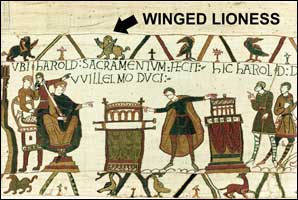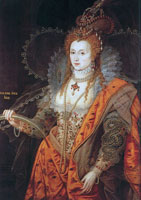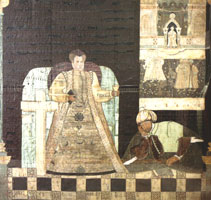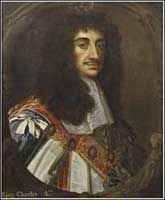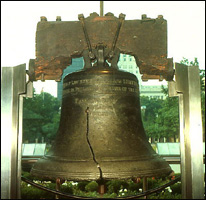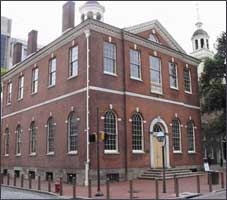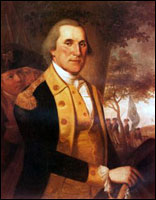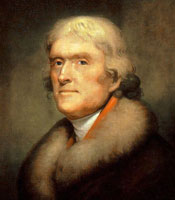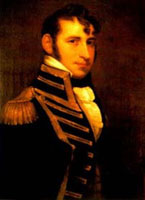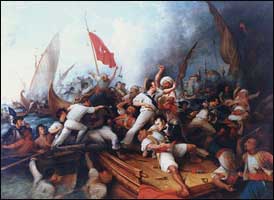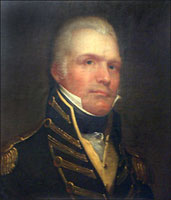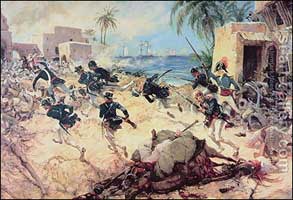IN1600, BRITISH LIONESS SULTANA SHAKE-SPEARE UNITED WITH THE SWORD OF ALLAH TO GIVE BIRTH TO AN ABOMINATION CALLED THE WHORE OF BABYLON (APOCALYPSE CHAPTERS 17 & 18). |
The Apocalypse predicted that Lucifer would be loosed from his prison after 1,000 years (Apocalypse 20:7). That statement symbolized increased Satanic activity after his confinement in the Bottomless Pit had expired.
England was a completely different country before the Conquest. Harold Godwinson—the last king before the Babylonian Captivity—was elected by his nobles. English was the spoken language and Christians did not build STONE churches.
Pope Alexander II gave William the Conqueror his blessing and the papal banners to carry across the sea from Normandy to England.
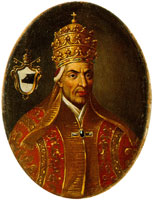 Pope Alexander II (1015–1073). Reigned from 1061 to 1073). |
|
Here is a description of Daniel's dream as recorded in the Douay-Rheims Version:
I saw in my vision by night, and behold the four winds of the heavens strove upon the great sea. And four great beasts, different one from another, came up out of the sea. The first was like a lioness, and had the wings of an eagle: I beheld till her wings were plucked off, and she was lifted up from the earth, and stood upon her feet as a man, and the heart of a man was given to her (Daniel 7: 2-4, Douay-Rheims Version).
In her defiant 1588 Tilbury Speech, Sultana admitted that she was a weak woman but she had the heart of a king:
I know I have the body but of a weak and feeble woman; but I have the heart and stomach of a king, and of a king of England too, and think foul scorn that Parma or Spain, or any prince of Europe, should dare to invade the borders of my realm: to which rather than any dishonour shall grow by me, I myself will take up arms, I myself will be your general, judge, and rewarder of every one of your virtues in the field (Patterson, With the Heart of a King, p. 299).
It seems that Sultana was quoting directly from Daniel Chapter 7. A weak woman on the throne was an open invitation to King Philip II to invade her realm. The queendom she was defending from the "Invincible Armada" was indeed Babylon . . . and she was the first queen to rule over it.
The lioness began ruling over Babylon in 1559
Elizabeth was the daughter of King Henry VIII and Saint Anne Boleyn. When Elizabeth was only 2-years-old, her mother was beheaded and became a martyr for Christ. Elizabeth is a living example of why the dynastic ruling principle is so corrupt. Good parents can produce rotten children. King David—the second king of Israel—was almost killed by his own son Absalom.
Prince Edward, King Henry's son by Jane Seymour, was known as the "British Josiah," but his reign was cut short because he died by poisoning, and he was succeeded by "Bloody Mary" Tudor. Elizabeth became queen after the death of "Bloody Mary."
|
Elizabeth grew up with a thorough knowledge of the Holy Bible. Her father, King Henry, knew the Latin Vulgate Version thoroughly (Leviticus 16:18). Her step-brother, Prince Edward, was a devout Christian, and her stepmother, Katherine Parr, was also a devout Christian who barely escaped the burning pyre. From cover to cover, the Holy Bible condemns females usurping power and ruling over men:
As for my people, children are their oppressors, and women rule over them. O my people, they which lead thee cause thee to err, and destroy the way of thy paths (Isaiah 3:12, King James Version).
The highly intelligent Apostle Paul had many female deacons and helpers who stayed with him in Roma when some of the men deserted. However, he was not ignorant of Apollyon's plans for the future overthrow of Christianity:
But I do not permit a woman to teach, nor to usurp authority over the man, but to be in silence. For Adam was first formed, then Eve. And Adam was not deceived, but the woman being deceived was in the transgression. But women will be saved through childbearing, if they continue in faith, love, and holiness, with sobriety (I Timothy 2:12-15, King James Version).
Saint John Bunyan—the immortal author The Pilgrim's Progress, was won to Christ by the pious Christian women in the village of Bedford.
Saint Paul had only 3 rules for Christian women: They were not to usurp authority and rule over men, they were to marry and have children, and they were to cover their heads when praying.
On the Isle of Patmos, the Apostle John was given a preview of the future enemies of the Christian Congregation:
So he (angel) carried me away in the spirit into the wilderness: and I saw a woman sit upon a scarlet coloured beast, full of names of blasphemy, having seven heads and ten horns. And the woman was arrayed in purple and scarlet colour, and decked with gold and precious stones and pearls, having a golden cup in her hand full of abominations and filthiness of her fornication: And upon her forehead was a name written, MYSTERY, BABYLON, THE MOTHER OF HARLOTS AND ABOMINATIONS OF THE EARTH (Apocalypse 17:3-5, King James Version).
In 1553, Britain had just survived 5 years of the reign of "Bloody Mary" Tudor, and now the inmates of that imprisoned island were forced to embrace another female, who was far more subtle and deadlier than her predecessor....The English word queen means the wife of a king; the British roaring lion is always depicted as a male.
In 1566, Parliament ordered Elizabeth to "turn Turk"
At that time in Britain, "turning Turk" was the phrase used for anyone who converted to Islam. For males, circumcision was the mark of Islam but that didn't apply to females.
The 1565 Great Siege of Malta, and the defeat of the Terrible Turks, was a milestone event in the history of 16th century Europe. Sir Oliver Starkey was the only British member of the Knights of Malta present on the island, and he was the eyes and ears of spymaster Sir Francis Walsingham. He was also an ancestor of titaniced Beatle Richard Starkey!
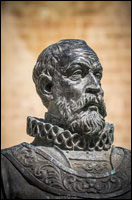 French Knight Jean de Valette (1495–1568). |
|
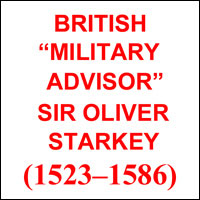 Sir Oliver Starkey was the "personal secretary" of Jean de Valette. |
Walsingham lost no time enacting all of his recomendations....King Henry was a strong king, and nobody's puppet, but Parliament seized the reins of power after his death. Walsingham's recommendations were enthusiastically approved by most of the MP's because anonymous Catholics (aka Jesuits), controlled the privy purse and they were obsessed with secrecy!
As a result, Walsingham ordered Queen Elizabeth to "turn Turk." We don't know what her initial reaction was, but her subsequent actions speak louder than words.
 Sultan Murad III (1546–1595). Sultan from 1574 to 1595. |
|
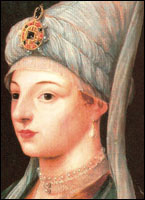 Safiye Sultan (1550–1619). |
As early as 1575, British agents were sent incognito to Constantinople to prepare the groundwork for formal diplomatic relations. They had some vital inducements to offer the Terrible Turks: military and naval advisors with arms and ammunition.
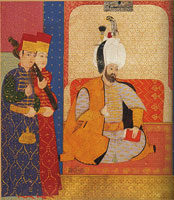 William Harborne (1542–1617) was the first British amb. to the Terrible Turks. |
|
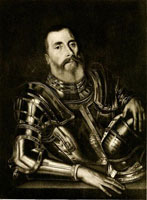 Sir Edward Osborne (1530–1591). |
Harborne's mission to Turkey was the official beginning of the British Empire. His first assignment was to undermine French and Venetian influence in the Sultan's palace. Since Safiye Sultan was the real power behind the throne, his job was made a lot easier. From that time onward, letters began to flow back and forth between Safiye Sultana and Sultana Elizabeth.
Bernardino de Mendoza was the Spanish ambassador in London and he kept Philip II informed of the British-Turkish alliance:
Mendoza went on to explain that the Turks are also desirous of friendship with the English on account of the tin which has been sent thither for the past few years, and which is the greatest value to them, as they cannot cast guns without it, while the English make a tremendous profit on the article, by means of which alone they maintain the trade with the Levant. (Brotton, The Sultan and the Queen, p. 93).
King Philip II knew that the Muslims were determined to reoccupy Spain which they called al-Andulus.
Sultana ordered church bells turned into BULLETS to arm the Terrible Turks!
The Prophet Isaiah wrote about "swords turned into plowshares" during the Messiah's peaceful millennium reign. So enthusiastically did Sultana embrace the Muslim religion that she ordered church bells to be melted down and turned into bullets:
A month later Mendoza reported that even more ships were headed to Chios, "carrying bell-metal and tin." It was a symbolic act of alliance that conflated the iconoclastic faith of Protestantism and Sunni Islam. With the queen's sanction, Protestant English merchants were removing metal from ecclesiastical buildings—including lead roofing and bell metal—and shipping it to Constantinople to arms Muslims fighting against Catholics. (Brotton, The Sultan and the Queen, p. 94).
The Sultana preferred to hear the sound of the muezzin . . . instead of church bells....Incredibly, she justified the actions of her merchants of death by insisting that Islam and Protestantism were similar because they didn't use statues or images in worship. The Turks even referred to the members of the British military mission as "Lutherans."
Sultana confirmed an alliance with al-Mansur for a universal Muslim Caliphate!
Remarkably, as the prospects of a Terrible Turkish conquest of Western Europe grew dim, Walsingham and Sultana began an alliance with the Sultan of Morocco.
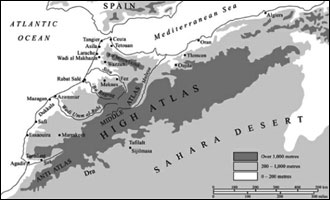 Morocco in the 16th century. Morocco in the 16th century. |
|
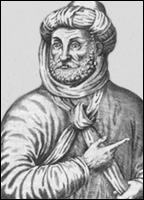 Ahmad al-Mansur (1549–1603). Sultan from 1578 to 1603. |
Al-Mansur was a megalomaniac, who claimed descent from Mohammed through his daughter Fatima. As a result, he believed that he was the Madhi, or Muslim messiah, destined to conquer the world for Islam:
Ahmad's Father and the founder of the Sa'dian dynasty, Muhammad al-Shaykh, promoted the idea that he was the Madhi with the help of Sufi brotherhoods. The Madhi, the Rightly Guided one, the Islamic messiah, must, according to messianic lore, be a descendant of the Prophet Muhammad, who will come at the End of Time, to restore the purity of the early faith and establish justice until the Final Hour. (García-Arenal, Ahmad al-Mansur, p.124).
The Muslim "messiah" is actually Apollyon or the Antichrist of the Holy Bible!
Armed with the latest weaponry from the British arsenal, al-Mansur sent his top general, Judar Pasha, to conquer and annex the Songhai Empire to Morocco. It didn't matter to him that the Sudanese were fellow Muslims.
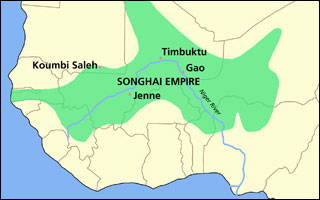 Map of the Songhai Empire. |
|
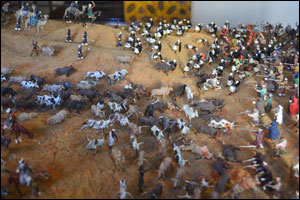 Cattle v. harquebuses and cannon. The Battle of Tondibi, April 1591. |
It was a one-sided battle, as the Sudanese were armed with swords, spears, and cattle, against British cannon and harquebuses:
Nevertheless, the most important sector of English trade was undoubtedly that of arms and munitions. The English sold matchlocks, muskets, harquebues, guns, sword blades, iron lances, chain-mail armour, gunpowder, bullets and cannonballs in Morocco. English traders also sold metals such as tin, necessary for the soldering of artillery weapons. (García-Arenal, Ahmad al-Mansur, p. 80).
After the battle, the Songhai Empire was annexed to Morocco, and because an inexhaustible supply of gold and slaves. Following the defeat of the "Invincible Armada" in 1588, al-Mansur was even more impressed with British military prowess:
England's victory over the Spanish Armada in the summer of 1588 prompted al-Mansur for the first time to view Elizabeth as a viable military and diplomatic ally. He now recognized the role she could play in his plans for the re-conquest of Spain and in Euro-Moroccan cooperation. To him, Elizabeth was now a means to an end: while she fought Spain to defend her island, she opened up the possibility for him to liberate al-Andalus from the tyrant of Castile, as he called Philip II. (Maclean & Matar, Britain and the Islamic World, 1559–1713, p. 52).
That victory was the main reason why al-Mansur sent an ambassador to London to cement a formal and long-lasting alliance.
 Apollyon waiting for Sultana to die so he can drag his "virgin" down to Hades. |
|
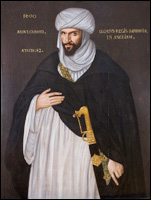 Sidi Abd al-Wahid. |
Here is a quote from a biography of al-Mansur:
The Moroccan embassy landed at Dover in August, and in September Abd al-Wahid sent the queen a memorandum proposing an alliance with Ahmad against Spain. The sultan would supply troops, munitions, food and water supplies, and would allow the use of a Moroccan port, which he would equip with all that was necessary for the English navy; the port would be used as a shared base from which to sail for America and the West Indies. Bearing in mind, the memorandum stated, that the King of Spain's strength lay in the West and East Indies, a joint Anglo-Moroccan conquest of those territories was essential.(García-Arenal, Ahmad al-Mansur, p.124).
Thankfully, Apollyon came for the Sultana and al-Mansur in 1603, and the Muslim reconquest of Spain had to be postponed.
Sultana's policies were continued during the succeeding 4 centuries!
Sultana's reign was a template for the succeeding 4 centuries. It is amazing how succeeding British sovereigns followed that pattern with very little deviation. King James was the son of Mary Queen of Scots and her "musician," Jesuit priest David Riccio.
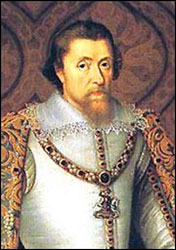 King James I (1567–1625). King from 1603 to 1625. |
|
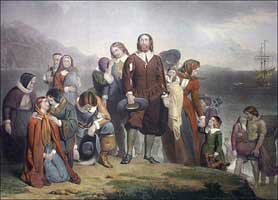 In 1620, the Pilgrims landed at Plymouth Rock in New England. |
At that time, the only safe refuge from the Moroccan slave pens was the New World. However, the Christians faced the hostile New World natives and very, very painful haircuts!
Ireland was invaded by the Barbary pirates in 1631
In a story that is very reminiscent of the captivity of Saint Patrick, Barbary pirates launched a pre-dawn raid on a village in Co. Cork, Ireland, and carried away 237 men, women, and children.
|
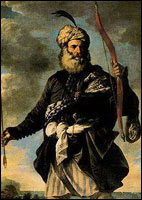 Pirate Murat Reis the Younger (1570–1641). |
When King Charles II was told of the invasion, he publicly displayed anger at the boldness of the Muslims, but secretly he was overjoyed that his kingdom had 237 less Christians.
For those who apostatized and "Turned Turk," life was a little bit easier, but for the remainder it was a living hell. The king expressed absolutely no interest in their fate, and no money was raised for their ransom. Without the industrious, hard-working Christians, Apollyon soon took over, and the village became a ghost town. From that time onward, nobody in the British Isles, France, or Italy wanted beachfront property.
The Royal African Company was formed to populate Virginia with Muslim slaves!
The first permanent New World English settlement was founded on April 26, 1607. It was called Jamestown, after King James I. All of the area from Florida to Canada was called Virginia by Sir Walter Raleigh.
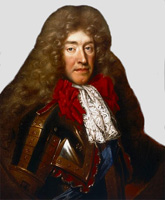 James, Duke of York, (1633–1701). |
|
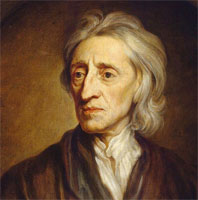 Muslim John Locke (1632–1704). |
In what was to become the largest transfer of people in human history, millions of African Muslims were brutally stolen from their homelands and transported in coffin ships to the New World.
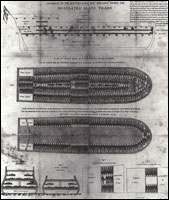 African slaves were packed like sardines on the HMS Brookes. |
|
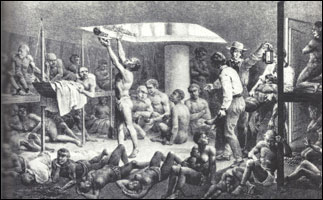 Abominable conditions prevailed on the HMS Brookes. |
The precursor to the Royal African Company was called the Company of Royal Adventures Trading to Africa. It was granted a charter by King James I. Sir Robert Rich, 2nd Earl of Warwick, and 36 others, were given exclusive rights to the African slave trade.
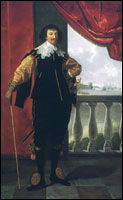 Sir Robert Rich (1587–1658). |
|
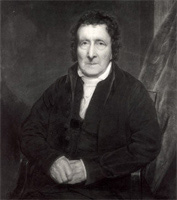 Liverpool slaver Thomas Golighty (1732–1821). |
The vast profits to be made from the trade in human flesh made the Whore of Babylon extremely wealthy. The slave trade was officially abolished by the British Parliament effective January 1, 1808, but by that time they had shipped millions of Muslim slaves to their former colonies.
In 1776, the New Englanders and the Virginians met for the first time in Philadelphia!
The remnant that escaped from the Whore of Babylon grew and multiplied from their small beginnings in Massachusetts. In Philadelphia, the descendants of the Pilgrims met the descendants of the colonizers of Virginia for the first time. Their agendas and their views concerning slavery were totally opposite.
|
Most of the New Englanders didn't think that King George III was a tyrant. As a matter of fact, King George was one of the very few Christian kings to reign in Britain. By that time, slavery was outlawed in most of the New England colonies, so there was a deep gulf between the North and South.
|
There was nothing original in the thoughts or actions of Thomas Jefferson. In the Old Covenant, King Jehoiakim of Judah took a penknife to the prophecies of Jeremiah; cut them up, and then threw them into the fire (Jeremiah 36:26). Here is a quote from the writings of Jefferson:
In the New Testament there is internal evidence that parts of it have proceeded from an extraordinary man; and that other parts are the fabric of very inferior minds. It is as easy to separate those parts, as to pick diamonds from dunghills (The Writings of Thomas Jefferson, Vol. XVI, pp. 101-102).
Anyone reading the "Jefferson Bible" would know immediately what he meant by DUNGHILLS. He specifically removed the Virgin birth, the miracles of Christ, his Resurrection from the dead, and his ascension into heaven. He stated that the Apocalypse was like a nightmare and the ravings of a maniac.
Obviously, he omitted the Apocalypse, or the Book of Revelation from his "bible. " Jefferson never took a razor blade to his Koran, and no Muslim would have any trouble with the beliefs of Thomas Jefferson.
The U.S. Navy ended the Barbary pirates reign of terror!
After the U.S. became an independent nation, their citizens were fair game for the Barbary pirates. Several U.S. ships were captured and the crew and passengers enslaved. Thomas Jefferson made several trips back and forth to France. He feared for the safety of his 2 daughters, and that made him finally react to the Muslim piracy.
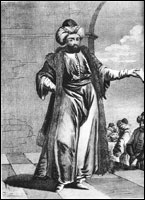 Yusaf Karamanli Pasha (1766–1838). |
|
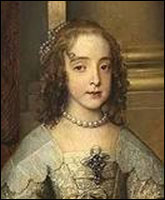 Maria "Polly" Jefferson (1772–1836). |
President Jefferson's daughter "Polly" made several trips to France, and he did not want her ending up in the Sultan's seraglio:
Yet an even more intimidating concern worried Jefferson: more frightening than weather or leaky ships was the threat of pirates off North Africa, a region known as the Barbary Coast, The fate of the Dauphin and Maria was a common one for ships venturing near the area, where the Sahara's arid coast was divided into four nation states. Running west to east were the Barbary nations Morocco, Algiers, Tunis, and Tripoli, which all fell under the ultimate authority of the Ottoman Empire, seated in present-day Turkey (Kilmeade, Thomas Jefferson and the Tripoli Pirates, p. 7).
That was the main reason why Jefferson unleashed the U.S. Navy on the Muslim pirates.
|
From the British viewpoint, the new United States was only temporary, until the occupation of the Louisiana Purchase following the conquest of New Orleans.
|
Starting out in Egypt, William Eaton led a small group of about 50 marines and 400 Muslim mercenaries on a 500 mile march through the desert. His final target was the city of Tripoli. After capturing Derna he received no naval support and had to abandon his plans. The town's capture, and the threat of further advance on Tripoli, were strong influences toward peace, negotiated in June 1805 by Tobias Lear and Commodore John Rodgers with the Pasha of Tripoli.
President Lincoln saved the "last best hope of earth"
The slavery problem was intractable and unsolvable by peaceful means. However, the Almighty send a man to save Revived Israel, just when the Whore of Babylon was determined to destroy the world's last best hope.
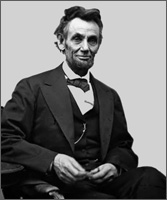 President Abraham Lincoln. |
|

New Salem, in Menard County, Illinois.
|
President Lincoln spent the entire Civil War in the lion's den. Washington City, on the Potomac River, is wedged between Maryland and Virginia, and the city had virtually no fortifications. It was never a good site for a capital city because it was located too far from the ocean.
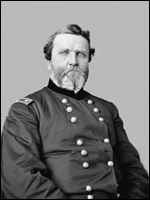 General George H. Thomas (1816–1870). |
|
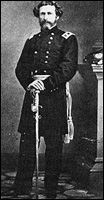 General John C. Frémont (1813–1890). |
Together, those 2 soldiers could have won the Civil War in 6 months....No man ever had so many internal and external enemies as President Lincoln. Even his own wife Mary was plotting against him. Despite the tremendous pressure of saving the Union, he never resorted to the wine bottle to ease his heavy burdens.
Christians are exhorted to be "on the double" against the Whore of Babylon!
The idiomatic expression "on the double" means to walk quickly or step lively:
Reward her (Whore of Babylon) even as she rewarded you, and double unto her double according to her works: in the cup which she hath filled fill to her double (Apocalypse 18:6).
Put yourselves in array against Babylon round about: all ye that bend the bow, shoot at her, spare no arrows: for she hath sinned against JEHOVAH (Jeremiah 50:14).
There are 2 Babylons mentioned in the Holy Bible: the physical and the spiritual.
The physical Babylon on the Euphrates River was the HQ of King Nebuchadnezzar. That city was conquered by the Medes and the Persians the night that King Belshazzar saw the handwriting on the wall (Daniel 5:30). The spiritual Babylon is the Papacy, which began its rise in 313, and received a mighty blow in 1517.
However, the spiritual Babylon has a TWIN . . . and her HQ is in LONDON . . . Babylon on the Thames!!
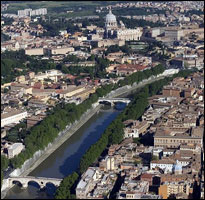 Aerial view of Babylon on the Tiber. |
|
 Aerial view of Babylon on the Thames. |
The rise and fall of the Babylon on the Thames was also predicted in the Apocalypse:
And there followed another angel, saying, "Babylon is fallen, is fallen, that great city (London), because she made all nations drink of the wine of the wrath of her fornication" (Apocalypse 14:8).
The last days Whore of Babylon began to receive some mighty blows at the time of the rebirth of Israel in 1776:
You (Nebuchadnezzar) watched while a stone was cut out without hands, which struck the statue on its feet of iron and clay, and broke them in pieces. Then the iron, the clay, the bronze, the silver, and the gold were crushed together, and became like chaff from the summer threshing floors; the wind carried them away so that no trace of them was found. And the stone that struck the statue became a great mountain and filled the whole earth (Daniel 2:34-35).
The great mountain is the Messiah's kingdom, which was to consume all the kings of the earth....That job was nobly begun in Philadelphia, by the descendants of the Pilgrims, who fled into the New World wilderness to escape the wrath of the Whore of Babylon (Apocalypse 12:6).
